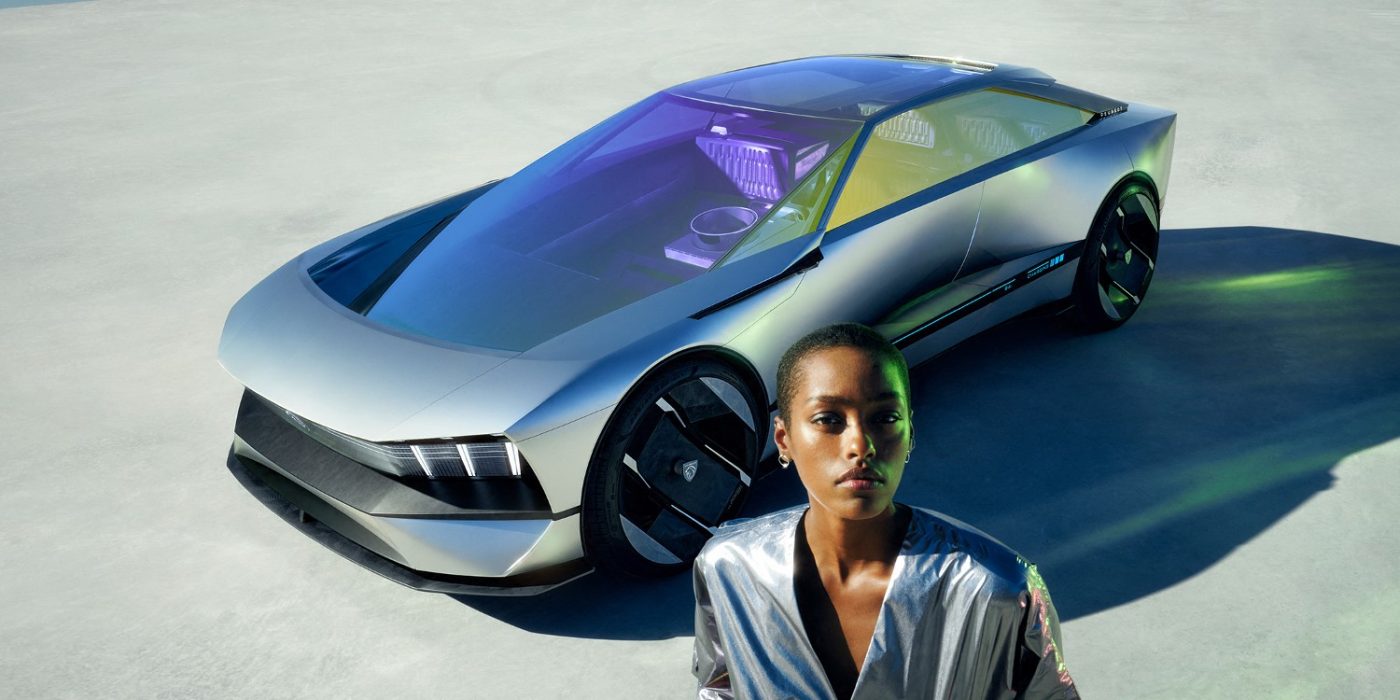CES: Peugeot Inception Concept rings in next-gen EVs
Peugeot has come to Las Vegas to present what designers call “a new era” in the company’s electric car design. The Inception Concept previews Peugeot’s future EVs which will arrive in 2025 – then relying on a pure BEV architecture.
Conceived to build the base for electric vehicles only, Stellantis’ STLA Large platform opens new freedoms for Peugeot designers as they now move free of constraints previously posed by ICE platforms doubling as EV architectures.
Peugeot designed a low-laying luxury sedan as the Inception Concept at the Consumer Electronics Show in the US. The STLA Large platform holds the capacity to support 800-Volt technology, and Peugeot has two motors powering the Inception EV. The combined drive is set at about 500 kW. With a 100 kWh battery, the car could cover 800 kilometres, thanks to a low consumption of only 12.5 kWh/100km.
With this, the French brand is more or less repeating the key data already specified for the STLA Large. Stellantis introduced the platform in 2021 to support electric vehicles in the D and E segments with a range of up to 800 kilometres. The STLA Large is designed for batteries of 101 to 118 kWh and vehicles stretching between 4.70 and 5.40 metres long and 1.90 and 2.03 metres wide.
Peugeot has yet to say whether the 500 kW dual-motor drive will be two equally powerful electric motors or rear-heavy with a more powerful motor on the rear axle. What is clear, however, is that the car will have to utilise the so-called EDM3 drive unit. The EDM3 is the only one of three ‘Electric Drive Modules’ supporting 800-volt – the EDM1 and EDM2 are pure 400-volt units. The EDM3 offers between 150 and 330 kW per motor.
Pure E-platforms enable new design approach
However, Peugeot does not go into such details of the drive system in the press release on the CES study Inception Concept, as it is primarily about the design. But this also has a solid electric reference: as the models based on the upcoming STLA platforms will not be combustion engine bodies with electric drive, the “BEV-by-design” platforms, according to Peugeot, open up “new perspectives with a daring architecture”.
Specifically, the five-metre-long saloon is to be only 1.34 metres high. This size was deliberately chosen “to highlight the numerous innovations of this concept car”. This refers to AI-based assistance functions: STLA Brain, STLA Smart Cockpit and STLA Autodrive. A concrete example of such an innovation: is the steering wheel with a mechanical connection to the front wheels is replaced by a “steer-by-wire” concept, which is operated via a “hypersquare control”, “in which digital electrical controls take the place of mechanical connecting elements”.
While a “steer-by-wire” steering system might make it into series production in 2025, this certainly does not apply to all elements of the Inception study. For example, the entire interior is covered by a glass dome measuring over seven square metres, which is also supposed to offer “exceptional thermal properties” – in reference to Nasa technology for the visors of astronaut helmets. In addition, the strikingly designed front section is unlikely to meet international crash test standards (for pedestrian safety, for example).
Nevertheless, the CES study is expected to play an essential role in the brand. “Our ambition is simple: to make Peugeot the leading electric brand in Europe by 2030. This objective and ambitious vision pave the way for a radical transformation for the brand,” said Linda Jackson, global CEO. “It is embodied today by the Peugeot Inception Concept, which marks the beginning of a new era.”
Additional reporting by Sebastian Schaal.




